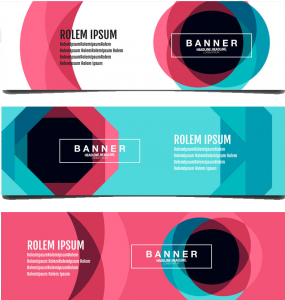These days, it’s all about e-commerce and social media. Think about it—most of us are either snagging deals online or scrolling through social feeds. Whether it’s grabbing groceries, hunting for trendy fits, or redecorating with some chic furniture, e-commerce has got us covered. And social media? It’s where we keep up with friends, share memes, and discover cool stuff we didn’t even know we needed.
Now, if your business isn’t on social media yet, what are you waiting for? Seriously, the combo of social media and e-commerce—aka social commerce—is the ultimate hack for staying competitive. Social commerce is all about blending the best of both worlds: connecting with your audience on platforms they already love and turning that attention into sales.
And trust me, this industry is blowing up. In 2025, social commerce is expected to hit a jaw-dropping $1.2 trillion. Yep, trillion. It’s already made waves, reaching a massive $492 billion globally in 2021 (thanks, Accenture stats).
So, how do you tap into this goldmine? Start with social commerce solutions that make it easy to use live social media feeds from platforms like Instagram, Twitter, Facebook, and even YouTube. It’s all about showing off your brand, building awareness, and running killer social media campaigns. And remember, nothing sticks in people’s minds unless they see it over and over again. Consistency is key.
In this blog, we’re breaking down the importance of integrating social commerce into your business. From boosting growth to skyrocketing conversions, we’ll explore all the ways you can level up. Ready to dive in? Let’s go!
Table of Contents
ToggleWhat is Social Commerce?

Social commerce is where social media and eCommerce join forces to create a shopping experience that feels less like “add to cart” and more like “OMG, I need this.” It’s not just about showing off products anymore. With social commerce, businesses can sell directly through social platforms like Instagram, Facebook, TikTok, and Pinterest. Yep, no need to send customers hopping over to your website—everything happens right where people are already scrolling.
Think of it as a one-stop shop where browsing, chatting, and buying happen seamlessly. Whether it’s a clickable post on Instagram, a TikTok video showing off trending products, or a Pinterest board with buyable pins, social commerce transforms casual scrolling into cash-generating sales.
And it’s not just about the products—it’s about engagement. Social commerce is all about building connections, answering questions, and making the shopping experience as interactive as possible. With the right social commerce solutions, you’re turning those likes, shares, and comments into serious sales opportunities.
Key Features of Social Commerce
Let’s get into the juicy details of why social commerce is such a game-changer and how these features make it a must for any business:
#1. Shopping Built Right In
You know how sometimes you see something you love online but don’t feel like clicking through five links just to buy it? Social commerce fixes that.
Instagram and Facebook now have shoppable posts and even full-blown storefronts right on your profile.
TikTok’s got those “Shop Now” links on viral videos, and Pinterest lets you buy products straight from pins.
Basically, these platforms let your customers find what they want and buy it without ever leaving the app. Talk about convenient, right? This frictionless experience is why businesses using social commerce solutions are seeing better conversion rates than traditional online stores.
#2. Real-Time Interaction = Real Connection
Social commerce isn’t just about selling—it’s about building relationships.
Live streams are a vibe. Brands are hopping on Instagram Live or TikTok Live to show off products, answer questions, and even drop exclusive deals in real time. It’s like QVC but way cooler.
Tools like polls, Q&A stickers, and comment sections make shopping personal. Customers get to feel heard, and you get to engage with them directly.
When you’re interacting with your audience in real time, it builds trust and creates a sense of community that keeps people coming back for more.
#3. Social Proof is Everything
we all trust a product a little more when we see others hyping it up.
With social commerce, customers can see likes, shares, and glowing reviews right on the product post. This kind of social proof makes people more likely to hit “Buy Now.”
And let’s not forget influencers. A single recommendation from someone your audience trusts can move products faster than any ad campaign.
Add some social commerce solutions into the mix, and you can showcase customer testimonials, reviews, and even user-generated content to strengthen that trust factor.
#4. Checkout Without the Hassle
You know what kills a vibe? Being forced to leave the app to make a purchase. Social commerce said, “Nah, we’re not doing that.”
Platforms like Instagram and Facebook now have integrated payment systems, so customers can shop without switching tabs.
By removing unnecessary steps, you’re making it easier for people to complete their purchase before they even have time to second-guess.
Smooth, seamless checkout = higher sales. It’s that simple.
Social commerce isn’t just a trend—it’s the future of shopping. It’s about meeting customers where they already spend their time and making it ridiculously easy for them to shop while they’re there. With tools and features that let you engage, connect, and sell all in one place, social commerce is redefining what it means to market online.
If you’re not jumping on this yet, now’s the time. Get started with the right social commerce solutions and watch your brand go from “nice” to “next-level.”
Difference Between Ecommerce and Social Commerce?

Ecommerce and social commerce might sound similar, but they’re actually quite different. They both deal with selling online, sure, but the how and where they do it? That’s what sets them apart.
Ecommerce is the big umbrella that covers everything when it comes to buying and selling online. Think of it as your go-to for any kind of digital shopping. Whether it’s:
#1. Browsing your favorite online store’s website,
#2. Shopping on a niche store app,
#3. Or snagging deals from big-name marketplaces like Amazon or eBay,
…it’s all ecommerce. Businesses use their own sites, apps, or third-party platforms to showcase products, handle payments, and deliver the goods.
But here’s the thing: ecommerce is often a bit more formal and detached. Customers visit a site, browse the products, buy, and leave. There’s usually little engagement beyond emails or product reviews.
Now, social commerce—this is where things get spicy. Social commerce takes the ecommerce concept and blends it with the social media vibe. It’s all about selling directly on platforms like Instagram, TikTok, Pinterest, or Facebook.
Here’s what makes social commerce so unique:
#1. Everything Happens in One Spot: You’re scrolling your feed, see something you like, tap “Buy Now,” and boom—you’re done. No switching apps or visiting a separate website.
#2. Engagement Is Built In: Social commerce thrives on interaction. Likes, comments, shares, DMs—they all play a role in how people discover and shop for products.
#3. It’s Visual & Fun: From shoppable posts to live shopping streams, the whole experience feels more personal and interactive.
With the right social commerce solutions, businesses can turn their social media feeds into full-blown storefronts while still keeping it all chill and customer-friendly.
So, What’s the Key Difference?
Ecommerce is broad and includes all types of online selling, whether it’s on your own site, an app, or a marketplace. It’s about providing a dedicated space for customers to browse, shop, and check out.
Social commerce is a niche within ecommerce, where the entire shopping experience happens inside a social media platform. You’re not just selling; you’re also engaging, building relationships, and leveraging social proof to boost sales.
Why Social Commerce is the master of the show?

Ecommerce is still a powerhouse, but if you’re not tapping into social commerce, you’re missing out. People are already spending hours scrolling through their feeds—why not meet them there?
With social commerce solutions, you can:
#1. Make it ridiculously easy for customers to shop,
#2. Use real-time interactions to answer questions and build trust,
#3. And boost sales by turning your likes and shares into tangible conversions.
Bottom line: Ecommerce is the foundation, but social commerce is where the action is.
Features and Offerings of Social Media for Social Commerce
Social media has completely transformed how businesses sell online, making it easier, faster, and a lot more fun. The secret sauce? Features designed to bring eCommerce right into your social feeds. Let’s break it down and see how these features and social commerce solutions can level up your game.
#1. Buy Buttons: Shop Without the Hassle
Ever been scrolling through your favorite social app, spot a product, and wish you could buy it without all the fuss? That’s exactly what buy buttons are for!
These handy buttons let customers jump straight from their feed to a product page—or, in some cases, complete their purchase without even leaving the app. Talk about convenience!
For example, Instagram’s swipe-up links (available to business accounts with 10k+ followers) are a killer tool. You can send followers directly to your eCommerce store or specific product pages with just one swipe. No extra clicks, no distractions. That’s next-level social commerce.
#2. Multi-Tagging: Boost Discoverability
Tagging isn’t just for calling out your friends anymore—it’s a powerhouse for social commerce. Most platforms let you use @mentions and #hashtags to make your content easy to find. Hashtags especially help customers discover your products organically.
What makes this even cooler? Platforms like Instagram allow shoppable tags, where you can link specific products directly in your posts. Imagine uploading a stunning photo of a model and tagging every piece they’re wearing—pants, bag, shoes, even accessories. Customers can simply tap on the tag, learn more, and buy it right there. It’s a seamless shopping experience your audience will love.
#3. Shoppable Galleries and Stories: Make Your Content Work Harder
Static content is so yesterday. Platforms like Pinterest and Instagram have embraced shoppable galleries and stories, turning visual content into virtual storefronts.
Pinterest Boards: Curate collections of your products into visually stunning boards. Whether it’s seasonal styles, trending items, or bestsellers, your audience can browse and buy with ease.
Instagram & Facebook Stories: Take advantage of product tags in stories to create quick, engaging sales opportunities. Your followers see the product, swipe or tap, and they’re ready to shop. It’s instant gratification for them and a conversion win for you.
Pro tip: Use high-quality visuals and videos to make your shoppable galleries pop. Remember, in social commerce, first impressions are everything.
#4. User Engagement: Keep It Social, Always
social commerce isn’t just about selling; it’s about building relationships. Unlike traditional eCommerce where customers come, shop, and leave, social commerce solutions encourage interaction.
You’re not just listing products—you’re inviting likes, shares, comments, and conversations. Every like or share introduces your brand to a wider audience, while comments give you a chance to connect directly with potential customers. This two-way street builds trust and keeps your audience coming back for more.
Engaged users are more likely to buy and even promote your products. They can become unofficial brand ambassadors, hyping your products to their friends and followers. That’s social proof gold.
#5. Messenger Support: Instant Help, Happy Customers
Let’s face it—nobody likes waiting for customer support. That’s why instant messaging and live chat features are game-changers for social commerce. Whether it’s a quick question about sizing or help with checkout, customers love real-time answers.
Social media platforms like Facebook Messenger, Instagram DMs, and even WhatsApp let you offer direct, personalized support. Fun fact: Over 90% of customers say live chat makes them happier than other support channels. So if you want to win hearts (and sales), this is a must.
Pro tip: Automate your chat support with chatbots for FAQs but make sure there’s an option to escalate to a human when needed. People appreciate the effort.
Social media isn’t just for scrolling anymore—it’s a full-blown sales channel. By leveraging features like buy buttons, multi-tagging, shoppable galleries, and instant messaging, you’re making it easier for customers to discover, engage with, and purchase your products.
Combine these tools with the right social commerce solutions, and you’re not just selling—you’re creating a seamless shopping experience your audience will keep coming back for.
Benefits of Social Commerce

Social commerce isn’t just about selling more—it’s about leveling up your entire brand game. From engaging your audience to boosting order values and improving your SEO, the advantages go way beyond just sales. Let’s dive into some of the major perks social commerce solutions bring to the table.
#1. Build Crazy Customer Engagement
Social media is where relationships are born. It’s not just about pushing products—it’s about connecting with your customers on a deeper level. When people feel like your brand “gets them,” they’re more likely to stick around and shop.
customers don’t just scroll through your product images—they’re checking out reviews, comments, and testimonials from other buyers. This user-generated content gives your brand credibility and helps potential customers feel confident about buying from you.
And the cherry on top? Some platforms make shopping ridiculously easy. Take Instagram, for example. You can tag your products in user posts or on your Shoppable Feed. That means people can discover, learn about, and buy your products in just a few taps. This seamless experience builds trust and keeps the shopping vibes alive.
#2. Grow Your Audience Regularly
A loyal, engaged audience is the foundation of any solid social commerce strategy. The best part? Social media is built to keep your audience growing.
For example, stats show that Southeast Asia has an impressive 16.98% new user growth rate. That’s huge. Platforms like TikTok, Instagram, and Snapchat have become Gen Z’s playgrounds, giving your brand endless opportunities to connect with new audiences.
But here’s the catch: while it’s awesome to attract new customers, keeping your current ones happy is equally important. A strong communication strategy can create a sense of belonging and loyalty. Happy customers not only come back for more but also spread the word about your brand. With the right social commerce solutions, you can continuously grow your audience while keeping your OG supporters hyped.
#3. Higher Average Order Value (AOV)
Social media users have unique tastes, and smart businesses are catering to them. Social commerce solutions make it easy to create a frictionless shopping experience that nudges customers to spend more.
Here’s how brands are killing it:
#1. Streamlined shopping journeys like direct checkout options make buying effortless.
#2. Interactive lookbooks let customers visualize how products fit into their lives.
#3. Personalized recommendations based on browsing habits tap into their FOMO.
Plus, there’s that powerful social element—seeing friends or influencers rave about a product often seals the deal. With all these tools working together, you can increase your customers’ spending and create a shopping experience that feels almost irresistible.
#4. Boost Your Search Engine Rankings
Here’s a little secret: social media engagement can help with SEO. Every like, share, comment, and interaction creates a ripple effect that boosts your online presence.
When your content gets traction on social platforms, it drives more traffic to your website. This not only leads to higher conversions but also signals to search engines that your brand is relevant and valuable.
Social commerce solutions also make it easier to build backlinks, generate referrals, and gather reviews—all of which contribute to better search engine rankings. The more your brand shows up in relevant searches, the more opportunities you have to reel in new customers.
#5. Gain Spot-On Customer Insights
Let’s talk data. Social media platforms are treasure troves of insights, and social commerce makes it easier than ever to analyze what’s working and what’s not.
With built-in analytics, you can track everything from impressions and engagement to reach and sales. Want to know which posts your audience vibes with? Check the stats. Need to figure out what’s driving clicks? The data’s right there.
This kind of intel helps you segment your audience, so you’re not just throwing content out there and hoping for the best. Instead, you can deliver the right content to the right people at the right time.
And here’s the kicker: when you combine social analytics with tools like A/B testing, you can fine-tune your campaigns and maximize results. Whether it’s tweaking your ad creatives or testing product tags, you’ll get actionable insights to fuel your growth.
At its core, social commerce is about meeting your audience where they already hang out and making their shopping experience as effortless as possible. From building genuine engagement to boosting your rankings and AOV, the benefits are too good to ignore.
With the right social commerce solutions, you’re not just running a business—you’re creating an experience. And that’s what keeps customers coming back for more. So, what’s your next move? Time to harness the full potential of social commerce and take your brand to the next level.
Types of Social Commerce Platforms You Should Know

If you’re serious about nailing your social commerce game, you’ve gotta start by understanding where to play. Not every platform is built the same, and each one has its own vibe and audience. So let’s break it down and see how different platforms are owning the social commerce solutions space—and how you can jump in to make the most of them.
1. Facebook
When it comes to social commerce, Facebook is like that seasoned pro who knows all the tricks. With Facebook Shop, businesses can create fully customized pages that function like mini e-commerce stores. Think of it as Shopify but built into Facebook, making it super easy for customers to browse and shop without bouncing to another site.
Here’s what’s cool about this platform:
#1. You can feature your best collections or products to grab attention right away.
#2. It’s easy to sync products from your website to your Facebook Shop, so managing your inventory feels less like a hassle.
#3. The platform’s built-in targeting tools ensure your products are getting in front of the right audience.
Bottom line? Facebook is all about blending convenience with customization, making it a top-tier player in the social commerce world.
#2. Instagram
Instagram is where people go to find stuff they didn’t even know they needed. Whether it’s through scrolling their feed, clicking on Stories, or exploring the Discover page, product discovery is baked into the experience.
Instagram Shops takes this a step further by letting customers discover and buy products without leaving the app. Bonus? It’s connected to your Facebook Shop, so managing both is seamless.
Here’s why Instagram slays at social commerce solutions:
#1. Shoppable posts: Tag your products directly in posts and Stories so people can shop on the spot.
#2. Influencer collaborations: Partner with creators to showcase your products to their followers.
#3. Visual storytelling: With tools like Reels, you can creatively show off your products in action.
Pro tip: Make sure your Instagram shop and posts feel authentic. Customers are more likely to engage with brands that vibe with their aesthetic and values.
#3. Pinterest
Pinterest might not be the first platform that comes to mind when you think of social commerce, but it’s been killing the game since way back in 2015. It was actually one of the pioneers with its Buyable Pins—those little buttons that let customers shop without leaving the app.
Here’s why Pinterest is low-key amazing for social commerce solutions:
#1. Visual appeal: Every pin feels like a mood board for your dream life.
#2. High-intent audience: People on Pinterest aren’t just browsing—they’re planning purchases.
#3. Seamless shopping: Product pins link directly to checkout, keeping things quick and easy.
If you’re in industries like fashion, home decor, or DIY, Pinterest is your golden ticket to reaching shoppers who are actively looking for inspiration and ideas.
#4. YouTube
YouTube isn’t just for watching cat videos anymore—it’s a rising star in the social commerce space. With its massive reach and focus on long-form content, YouTube is perfect for brands and influencers looking to showcase products in-depth.
The platform is already rolling out shopping features to make it easier for viewers to buy directly. Plus, YouTube is heavily investing in social commerce solutions to grow this segment even further.
Here’s the magic:
#1. Product showcases in videos: Creators can tag products directly in their videos.
#2. Affiliate-style revenue sharing: YouTube splits profits between itself, creators, and brands, creating a win-win-win scenario.
#3. In-video CTAs: Links and banners that guide viewers to checkout without disrupting the viewing experience.
So, whether you’re a brand partnering with creators or using your own channel, YouTube offers tons of ways to connect with audiences and drive sales.
#5. TikTok
If you’re not already on TikTok, what are you even doing? This platform is where trends are born, and it’s become a powerhouse for social commerce. TikTok is the third-largest social network after Facebook and Instagram, and it’s THE place to be if you’re targeting Gen Z or Millennials.
Here’s how TikTok is revolutionizing social commerce solutions:
#1. In-feed video purchases: Shoppable videos make it easy for users to buy what they see without leaving the app.
#2. Product showcase tabs: Brands can display their entire catalog on their profiles.
#3. TikTok LIVE shopping: This interactive feature lets users shop in real time while watching a livestream.
The beauty of TikTok is its authenticity. People want raw, real content that doesn’t feel too polished. So, whether you’re running an ad or showcasing products in a viral dance challenge, the key is to keep it fun and relatable.
Every platform offers unique opportunities to connect with your audience and grow your brand. Whether you’re leveraging the customization of Facebook, the discovery power of Instagram, or the trendsetting energy of TikTok, each one has its strengths. By understanding what makes each platform tick, you can create social commerce solutions tailored to your audience and crush your sales goals.
How to Leverage Social Media for Conversions Like a Professional – Best Practices
social commerce isn’t some magic wand you wave to make sales rain. To see results, you’ve got to work smart, use social media like a boss, and implement strategies that actually convert. Here’s how to supercharge your efforts and make the most of social commerce solutions.
#1. Give Your Customers a Voice with User-Generated Content (UGC)
People trust people. That’s why user-generated content is gold. It’s like free, authentic advertising. Start conversations and encourage your customers to share their experiences with your products. Here’s how to make it happen:
Run polls, surveys, and ask questions: Make your followers feel heard. Post questions or fun polls that’ll get people talking and sharing their opinions.
Host contests and giveaways: Give your audience a reason to engage. Offer a prize for sharing creative content featuring your products.
Brand hashtags: Create a catchy, unique hashtag and ask your customers to use it when they post about your products. Don’t just sit back—interact! Like their posts, share their content, and give them shoutouts to show appreciation.
UGC is a game-changer in social commerce. It boosts trust, strengthens relationships, and makes your brand relatable.
#2. Tap Into Influencer Power
Let’s face it: influencers run the game. Nearly 90% of marketers say the ROI on influencer marketing is just as good—or better—than other channels. Why? Because people believe influencers way more than they trust ads.
Collaborate with influencers: Offer them cash or free products to promote your brand, especially on platforms like Instagram and TikTok. A well-timed post from the right influencer can work wonders.
Spot loyal customers who are lowkey influencers: Keep an eye out for die-hard fans who are already hyping your brand. They’re your MVPs and might be open to promoting you further for incentives.
When influencers vouch for your products, it’s like getting a trusted friend’s recommendation—instant credibility for your social commerce efforts.
#3. Track Success with the Right Tools
Let’s keep it real—vanity metrics like likes and shares mean nothing if they’re not converting into sales. That’s why you need to get serious about tracking the right KPIs. Use analytics tools to measure the real deal:
Reach and engagement: Who’s seeing your posts, and are they actually interacting with them?
Clicks and conversions: Are people taking action? Whether it’s visiting your site, signing up, or buying, these numbers matter most.
Sentiment and feedback: Check how people are talking about your brand. Are the vibes good, or do you need to adjust your game plan?
Social commerce solutions thrive when you combine solid content with data-driven strategies.
#4. Set Up Shop on Facebook
If you’re not using Facebook Shops yet, you’re sleeping on some serious social commerce potential. Facebook lets you create a fully-functional storefront where customers can browse, shop, and checkout without leaving the app. Some perks:
Sync with Shopify: Already on Shopify? Great! You can integrate your inventory and manage it seamlessly across platforms.
Shoppable posts: Tag your products in photos and videos to make posts interactive. When someone clicks on a tagged product, they’ll see details and can even purchase it right there.
Higher AOV (Average Order Value): Facebook Shops have been shown to drive higher order values compared to standalone websites.
#5. Offer Discounts and Limited-Time Deals
Nothing gets people moving faster than a good ol’ deal. Create urgency with exclusive discounts, flash sales, and promo codes. FOMO (fear of missing out) is real, so leverage it to boost sales.
Create urgency: Use phrases like “Only 2 hours left!” or “Limited stock available!” to light a fire under potential buyers.
Reward loyalty: Offer exclusive deals for returning customers to keep them hooked.
#6. Invest in Social Media Ads
Organic reach is great, but if you want to hit a bigger, more targeted audience, you’ve got to put some cash into ads. Social platforms make it easy to set up campaigns tailored to your ideal customer.
Instagram: Use video and carousel ads to show off your products in style.
Facebook: Run customized campaigns to target specific demographics and interests.
A well-placed ad can fast-track your social commerce goals.
#7. Create FOMO to Drive Action
FOMO is a powerful psychological trigger. People don’t want to feel left out when they see others raving about a product or event. Use this to your advantage:
Highlight customers enjoying your products: Show real people using your stuff and loving it. Seeing others’ excitement can push undecided customers to hit “buy.”
Host exciting giveaways: Everyone loves free stuff. Create contests where people need to share your posts or tag their friends to enter. This spreads the word and gets people hyped.
#8. Make Product Pages Shareable
Your product pages shouldn’t just be about showcasing your stuff—they should also encourage sharing. Add social sharing buttons and include a call-to-action (CTA) that nudges customers to spread the word.
Add share buttons: Make it easy for customers to share your products on platforms like Instagram, Facebook, and Pinterest.
Ask them to share: Add a friendly note like, “Love this product? Share it with your friends!”
Word-of-mouth marketing is a major player in social commerce.
Social media is the ultimate playground for conversions, but only if you work it right. From user-generated content and influencer marketing to FOMO-driven campaigns and shoppable posts, there’s no shortage of ways to make social commerce work for you. Start implementing these best practices, and you’ll not only boost conversions but also build a loyal community around your brand.
Conclusion
Social commerce is no longer optional—it’s a must for any solid e-commerce strategy. Blending the power of social media with online shopping isn’t just trendy; it’s a proven way to pull in more customers, build trust, and ultimately boost those conversion rates. The numbers and trends don’t lie—if your business isn’t leveraging social commerce, you’re leaving money on the table.
Social media isn’t just a platform to scroll through memes or like your friends’ vacation pics. It’s a goldmine for connecting with your audience, creating hype around your brand, and driving sales like never before. Customers don’t just want to shop—they want experiences. Social commerce solutions let you meet your audience where they already hang out, making shopping as easy as liking a post or sliding into a DM.
At the heart of it all, we’re committed to making your business thrive in this fast-paced, digital-first world. By weaving social media features seamlessly into your e-commerce app, we’re helping you reach more people, build stronger connections, and boost revenue like a boss. Think of it as your shortcut to creating meaningful relationships with customers while giving your bottom line a serious upgrade.
With social commerce solutions, you’re not just selling products—you’re crafting an experience that sticks with your audience. From in-app shopping tools to integrations that let users shop directly from their feed, we’re here to help you level up. The goal? More clicks, more buys, and way more satisfied customers.
This is your chance to step up and own the social commerce space. Make your brand impossible to ignore, strengthen loyalty with your customers, and keep those sales rolling in. It’s not just about keeping up anymore; it’s about leading the charge and showing the world what your business is capable of. Let’s make it happen.








